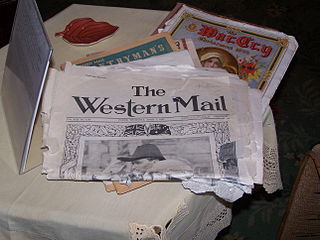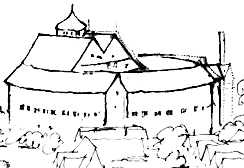
Perth is the capital and largest city of Western Australia and the fourth most populous city in Australia and Oceania, with a population of 2.2 million living in Greater Perth. Perth is part of the South West Land Division of Western Australia, with most of the metropolitan area on the Swan Coastal Plain between the Indian Ocean and the Darling Scarp. The city has expanded outward from the original British settlements on the Swan River, upon which the city's central business district and port of Fremantle are situated. Perth is located on the traditional lands of the Whadjuk Noongar people, where Aboriginal Australians have lived for at least 45,000 years.

Western Australia is a state of Australia occupying the western third of the land area of Australia, excluding external territories. It is bounded by the Indian Ocean to the north and west, the Southern Ocean to the south, the Northern Territory to the north-east, and South Australia to the south-east. Western Australia is Australia's largest state, with a total land area of 2,527,013 square kilometres (975,685 sq mi). It is the second-largest country subdivision in the world, surpassed only by Russia's Sakha Republic. As of 2021, the state has 2.76 million inhabitants—11 percent of the national total. The vast majority live in the south-west corner; 79 percent of the population lives in the Perth area, leaving the remainder of the state sparsely populated.

The West Australian is the only locally edited daily newspaper published in Perth, Western Australia. It is owned by Seven West Media (SWM), as is the state's other major newspaper, The Sunday Times. It is the second-oldest continuously produced newspaper in Australia, having been published since 1833. It tends to have conservative leanings, and has mostly supported the Liberal–National Party Coalition. It has Australia's largest share of market penetration of any newspaper in the country.

Amanda Lillian Muggleton is an English Australian theatre, television and film actress. She is best known for her supporting television soap opera role in Prisoner as Chrissie Latham, with appearance between 1979 and 1983.
Stuart Wagstaff was an English-born Australian entertainer who was active in all genres of the industry including theatre, television and film, and music and stage management.

Perth Rectangular Stadium is a sports stadium in Perth, the capital of the Australian state of Western Australia. Located close to Perth's central business district, the stadium currently has a maximum capacity of 20,500 people for sporting events and 25,000 people for concerts, with the ground's record attendance of 32,000 people set during an Ed Sheeran concert in 2015. The land on which the stadium was built, known as Loton Park, was made a public reserve in 1904, with the main ground developed several years later.

Perth Festival, named Perth International Arts Festival (PIAF) between 2000 and 2017, and sometimes referred to as the Festival of Perth, is Australia's longest-running cultural festival, held annually in Western Australia. The program features contemporary and classical music, dance, theatre, performance, literature and ideas, visual arts, large-scale public works. The main events of the festival take place every year, from February to March and the film program now known as Lotterywest Films runs from November to April, as part of the Perth Festival.
Black Swan State Theatre Company is Western Australia's state theatre company. It runs an annual subscription season in Perth at the State Theatre Centre of Western Australia, tours its productions regionally and interstate, and screens live broadcasts around the state. Black Swan's Artistic Director is Clare Watson; past artistic directors include Kate Cherry, Andrew Ross and Tom Gutteridge.

Theatre of Australia refers to the history of the live performing arts in Australia: performed, written or produced by Australians.

The Western Mail, or Western Mail, was the name of two weekly newspapers published in Perth, Western Australia.
Robert Litchfield Juniper, AM was an Australian artist, art teacher, illustrator, painter, printmaker and sculptor.
Caroline McKenzie is an Australian stage and screen actress. She is a member of the theatre and dance faculty at the Western Australian Academy of Performing Arts at Edith Cowan University.

Currency Press is a leading performing arts publisher and its oldest independent publisher still active. Their list includes plays and screenplays, professional handbooks, biographies, cultural histories, critical studies and reference works.
Perth Theatre Company was a live theatre company in Perth, Western Australia.

Peter Trevor Collingwood was an English-born actor who appeared in theatre roles, films, miniseries and serials from 1938 to 2003 in his native England and Australia. Collingwood was known for his portrayal of judges, military men and upper-crust befuddled types. He was also a playwright.
Edgar Metcalfe, was an English-born actor, director and author, who widely contributed to theatre in Perth, Western Australia.

Pop-up Globe was a New Zealand theatre production company, based in Auckland, New Zealand. It produced Jacobean theatre, particularly the works of Shakespeare, in specially-built temporary replicas of the second Globe, the theatre Shakespeare and his company built and used. The company’s theatre was the world's first full-scale reconstruction of the Second Globe Theatre (1614–44).
The Perth Theatre Trust is a statutory authority which manages and operates cultural venues in Western Australia. It manages His Majesty's Theatre, the State Theatre Centre of Western Australia, the Subiaco Arts Centre, the Albany Entertainment Centre, the Goldfields Arts Centre and the Perth Cultural Centre. The Trust leases the Perth Concert Hall from the City of Perth but the venue is managed by WA Venue and Events. The Trust also has a Museum of Performing Arts based in the His Majesty's Theatre building.
The Perth International Jazz Festival (PIJF) is an annual jazz festival event held over three days in early November. This jazz festival incorporates both ticketed and free community events. Its location over the festival weekend spans across the CBD of Perth, the cultural precinct area of Northbridge, through to Hyde Park in the City of Vincent.
The Man from Mukinupin is a musical play by Dorothy Hewett. It was commissioned in 1978 to mark Western Australia's sesquicentenary, and is her most popular and successful play. It is a romantic comedy in two acts covering the periods 1912 to 1914 and 1918 to 1920. The play involves the principles of celebration and reconciliation, providing a "rich theatrical experience with song, dance, humour, and powerful incident."












